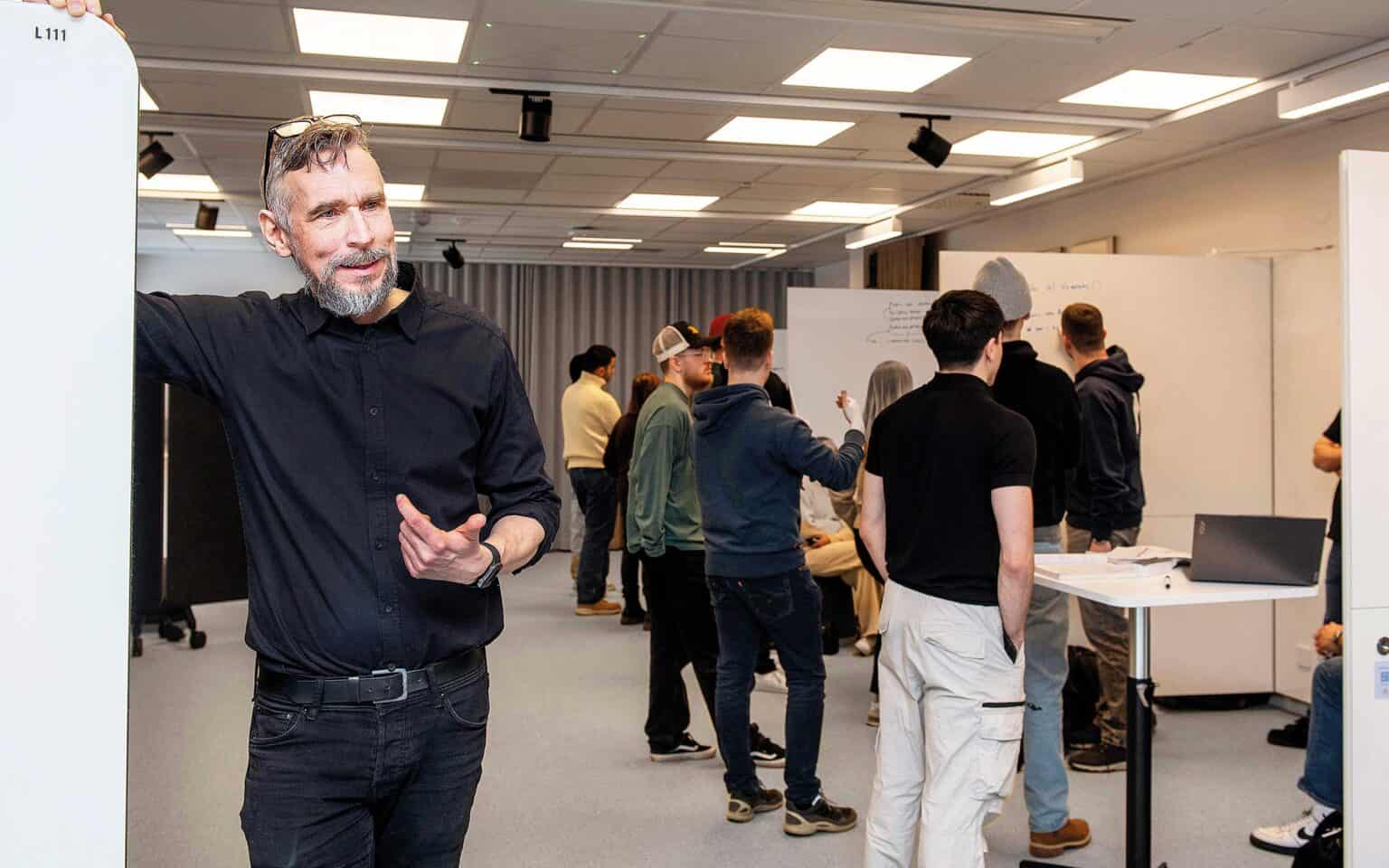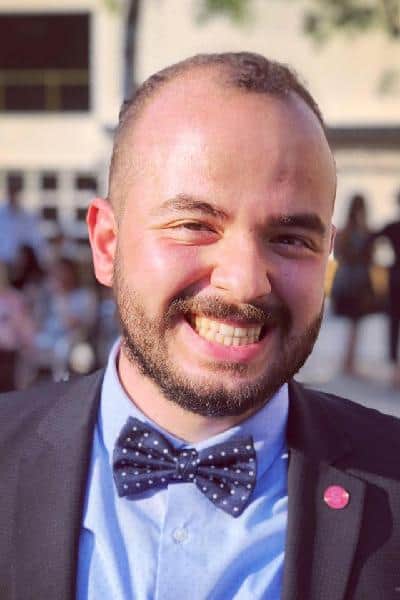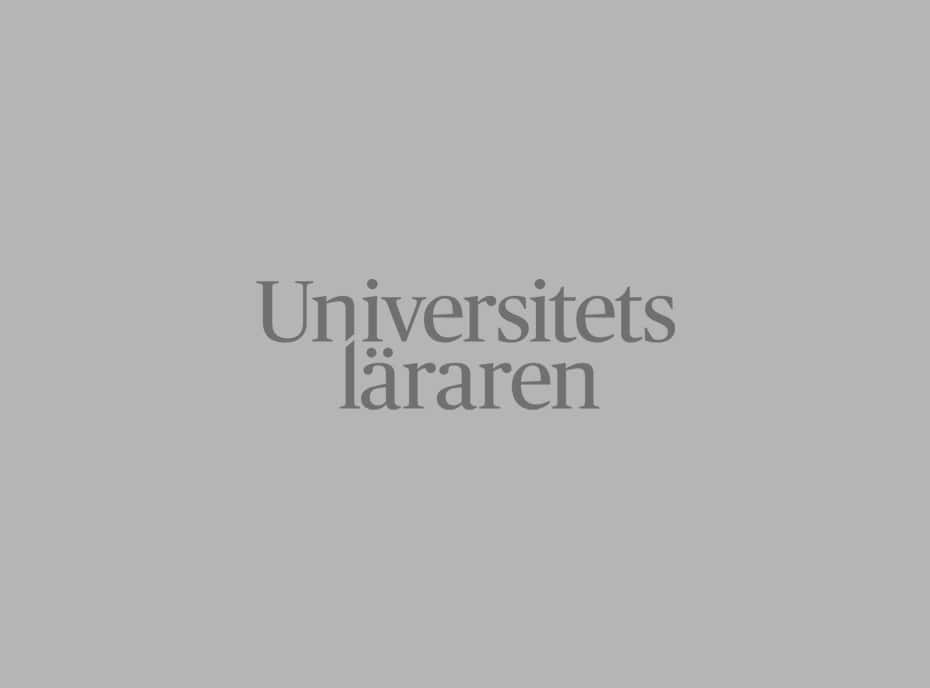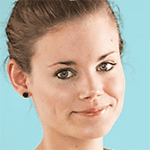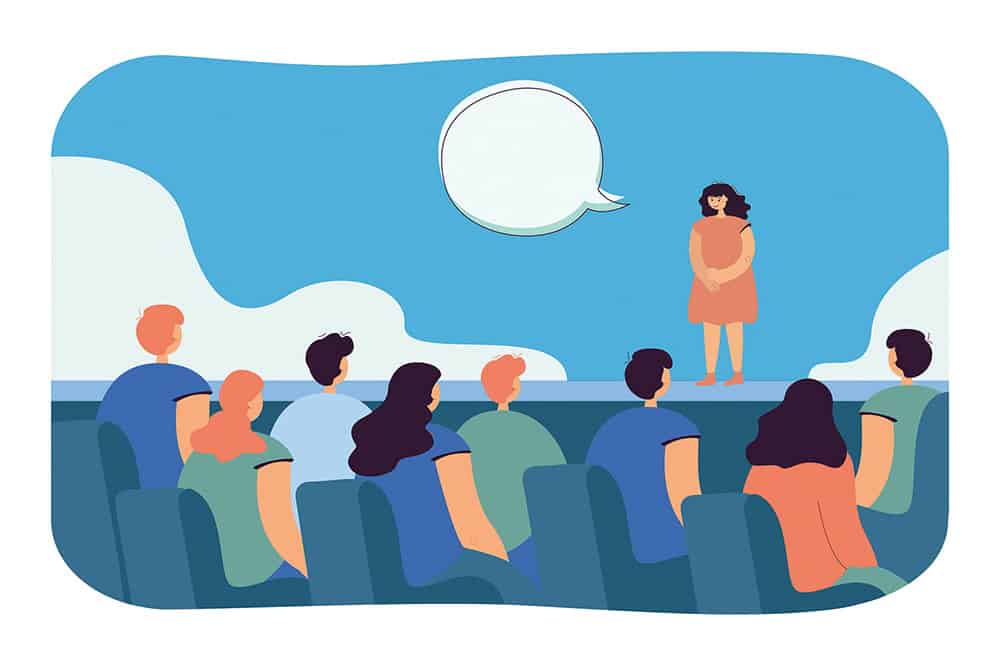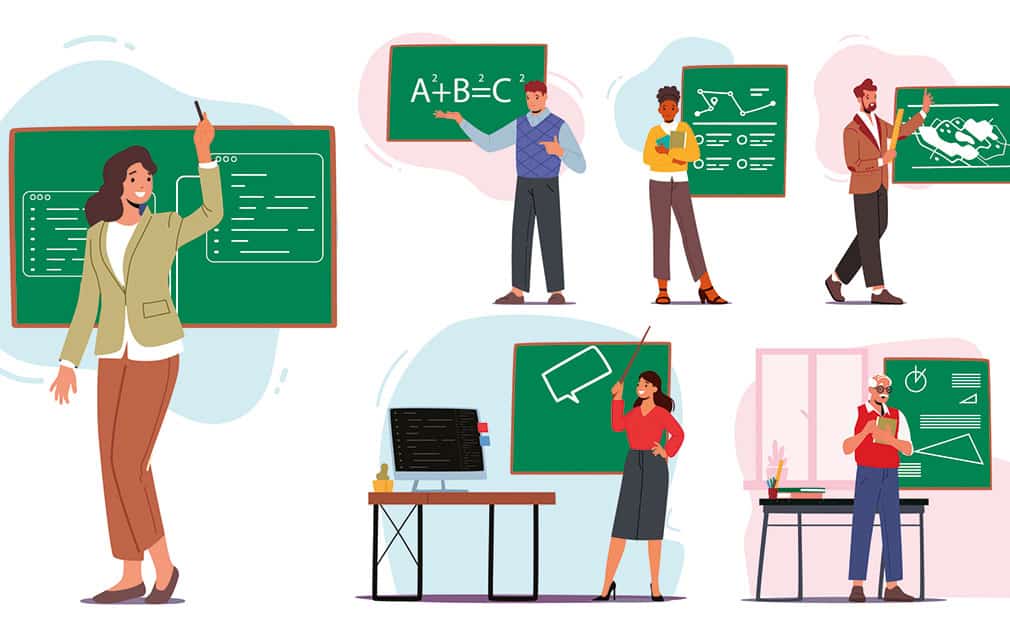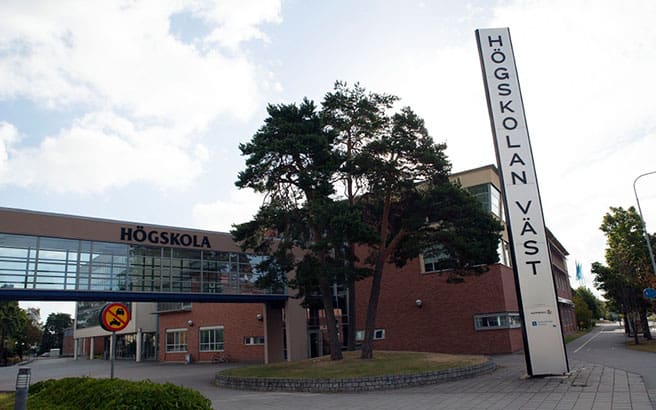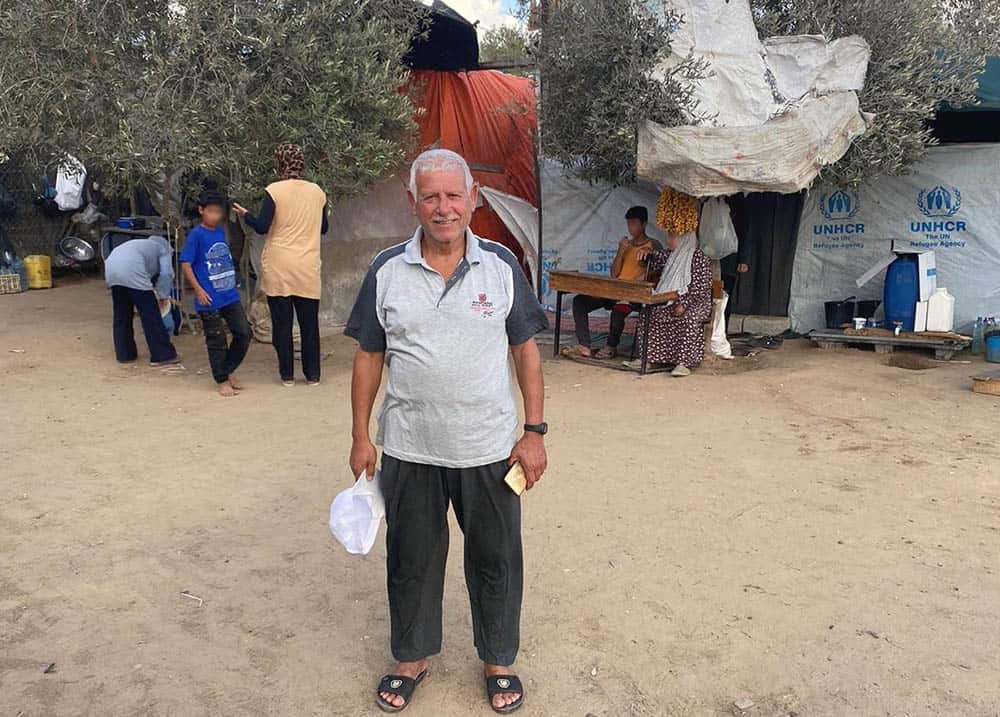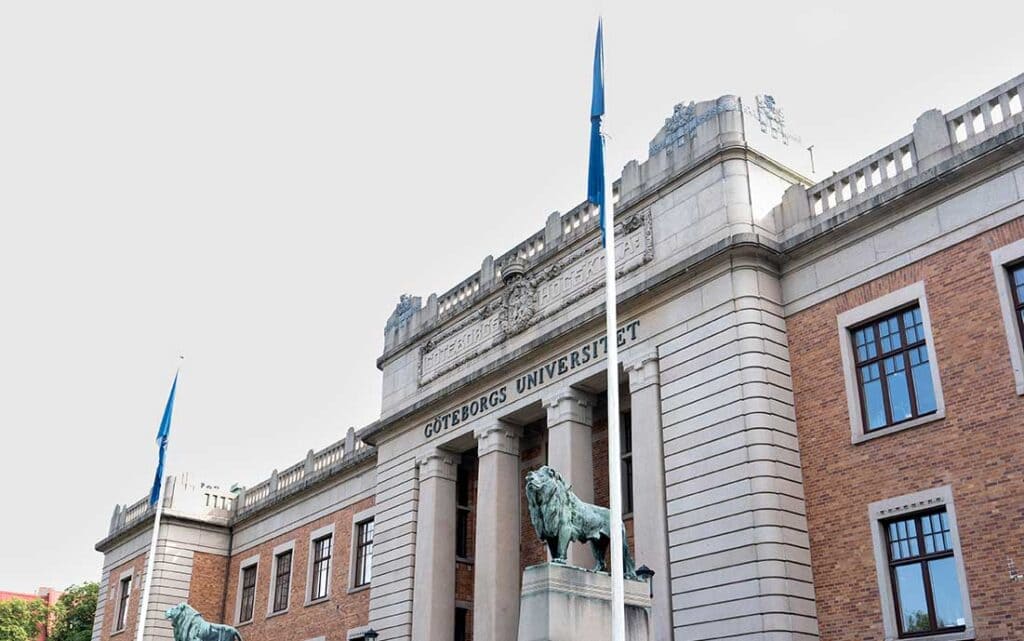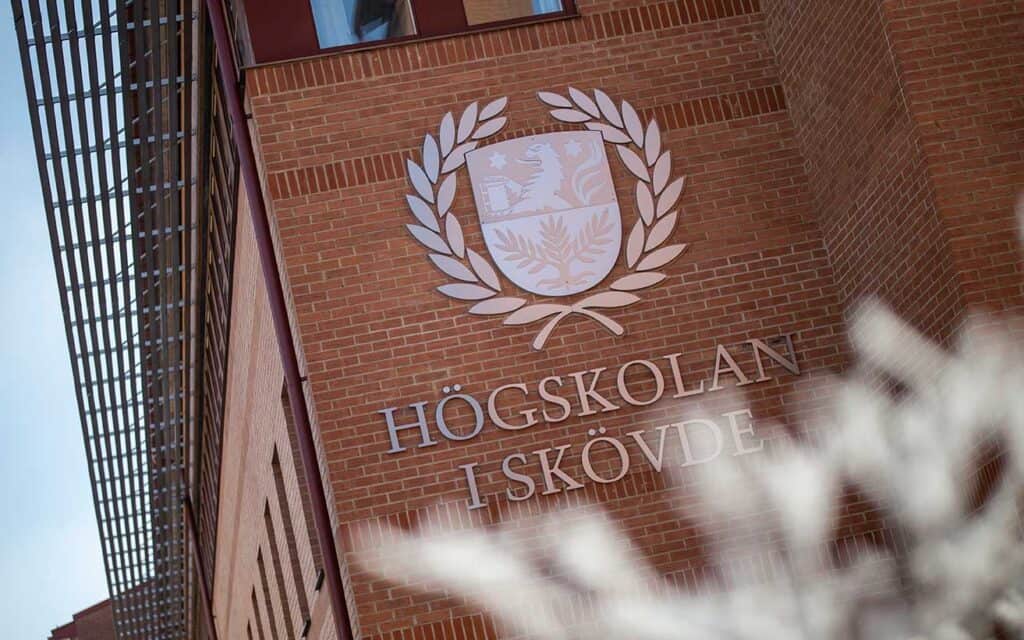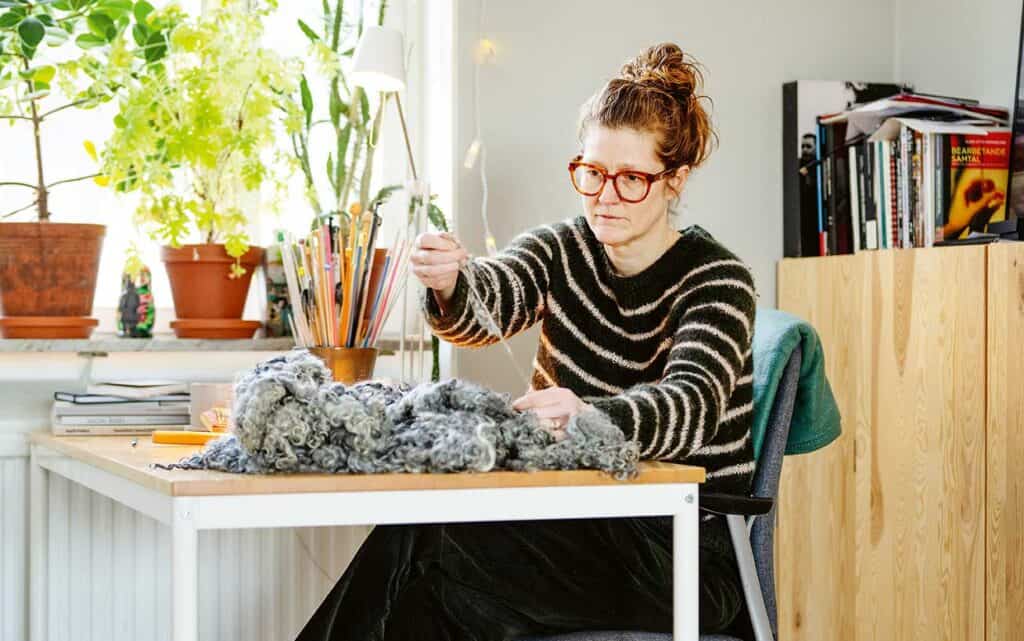One of the corridors of the Långhuset building on the Örebro University campus is not like all the others. On one side, along a glass wall that looks out on to the building’s entrance, there is a whole row of study places. On the other side, there are five large whiteboards on the wall, side by side.
One Friday in April, as an unexpected snowfall turns the ground outside the window white, the corridor is full of students. A sign has been placed right at the beginning of the corridor saying ”Teaching in progress. If you need to pass, please do so quietly.”
Here, the morning will be devoted to a walkshop on programming, an educational method that has been developed at Örebro University over the past ten years. Johan Petersson, a senior lecturer at the University’s School of Business, has been leading the development of walkshops since the method’s inception.
“Like many other university teachers, I am not a qualified teacher. So when I took a course in pedagogy here about ten years ago, I started thinking about the traditional course structure, with several lectures a week in normal lecture rooms, and how effective it actually is in relation to the learning objectives in the curriculum,” he says.
Petersson is a teacher on a programming course given during the first term of the systems science programme.
The learning objectives of the course state that the students need to be able to describe, explain and express basic concepts and principles within object-oriented programming, i.e. broad programming knowledge that is not focused on a specific programming language.
“When I really dug into this, it was like a revelation. It was so clear that that was what we teachers were doing, not the students. We described, explained and expressed problems, and the students just had to watch and listen. Even though it says that the students need to be able do this, not just be able to do it in theory.”
Since then, the walkshop concept has been developed. The basic idea is to make the teaching time active, both mentally and physically, and to shift the focus from the teacher to the students.
“When you program, there is a syntax that you write. Normally that is done on a computer, but here it is done by hand,” says Petersson.
Today’s walkshop has started. Approximately 30 students have been divided into groups of five, and each group has been assigned one of the whiteboards along the walls of the classroom just off the corridor.
The corridor, with its many work surfaces, can also be used if more space is needed, but today the classroom is more than enough. Fold-out walls have been pulled out to create small “rooms”, one for each group. These are also made of whiteboard material and can be used to write up syntaxes and calculations.
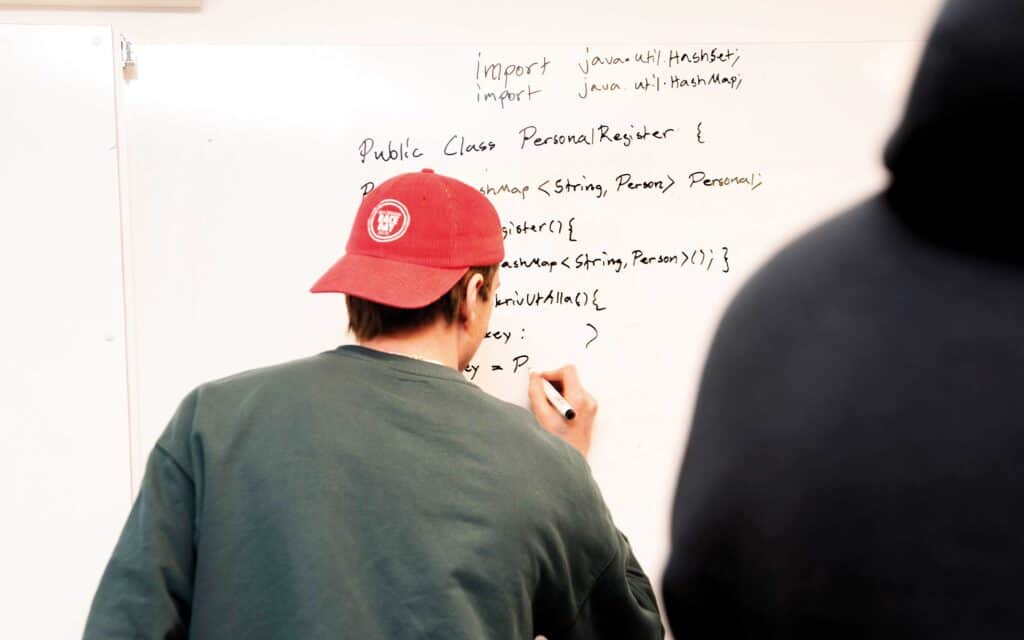
Each group has received a paper booklet, with step-by-step descriptions of the day’s assignment. The students are to program a database containing all the names of the students in the class, and the user must be able to add and remove names. All the programming is done by hand and in groups, on the whiteboards assigned to the respective group.
To help them, they have the course book and one computer per group, which may only be used to search for information, not to do the actual programming.
“When the lesson is over,” says Petersson, “we post a video where one of the teachers solves the task in the programming program. The students can watch it and see if they did it correctly and get explanations for parts they may have had difficulty with.”
All around there is the constant low murmur of all the groups discussing the many steps in the task, and black text begins to fill the white, glossy boards. In addition to syntaxes, each whiteboard also shows a list of the group members’ names.
“The teachers divide the students into groups, and they are different each time. In addition to learning programming, we also want the students to learn from each other and to learn to cooperate.”
The students taking this course often have varying levels of prior experience in programming. Some have done a lot of programming before, others none at all.
By always having different groups, the teachers hope that the students will also share knowledge with each other.
“A student with a lot of experience can teach a beginner, and both of them benefit. The beginner gets to learn something new and the more experienced programmer gets to develop their knowledge by passing it on to others,” says Petersson.
The division into groups is in many ways very random, except in one respect.
“We always make sure that there is not just one girl in any group. There are always at least two,” Petersson explains.
The systems science programme itself is male-dominated, and subjects like programming tend to attract more men than women.
Over the ten years that they have been developing the walkshop method, Johan Petersson and his colleagues have received feedback from previous students that when there is just one woman in a group, she risks being left out of the conversation.
“Many women feel that they are left alone with a group of guys who will explain things to them. We try to prevent that as much as possible.”
“Many women feel that they are left alone with a group of guys who will explain things to them. We try to prevent that as much as possible.”
Even though the groups have to try to solve the programming task on their own as far as possible, there is always help available.
Teacher Andreas Ask is leading today’s lesson. He walks around among the different groups and helps them if they get stuck or if they want to discuss concerns that come up in the process.
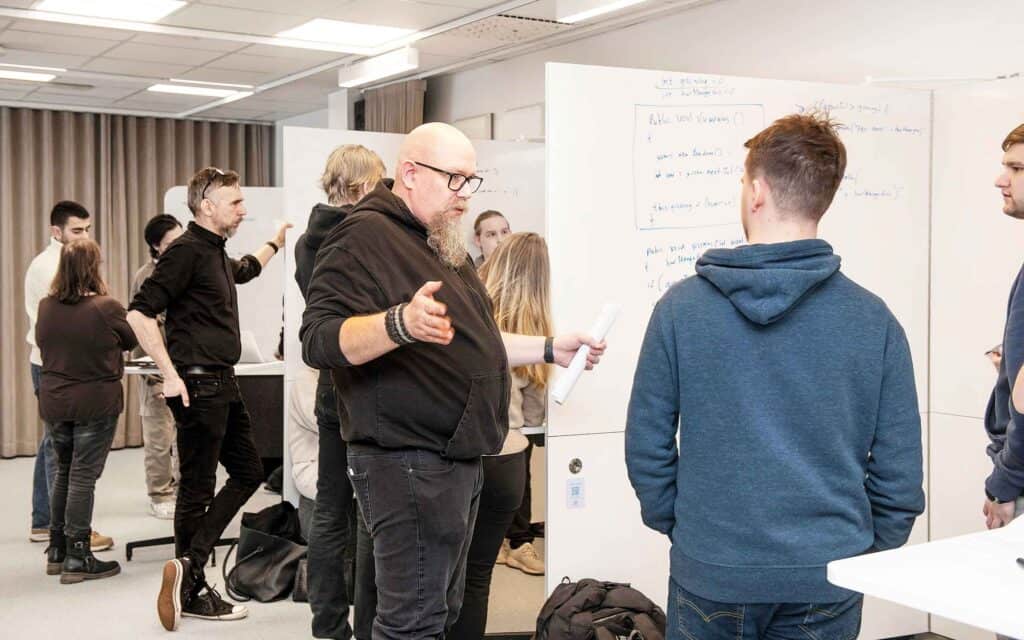
Learning Labs in Örebro, Gothenburg and Umeå
Learning Labs is a four-year project at Örebro University in collaboration with Akademiska hus, running until 2025. The project aims to develop knowledge regarding the impact of the study environment on future learning. The project is also running at two other universities, Gothenburg and Umeå. The three universities have different goals, but all are exploring how the flexible design of rooms and technology support different kinds of learning situations.
Ask has been working as a teacher on the programming course since 2019.
He thinks the more active teaching method works well and says that several students say that they appreciate the approach.
“I was a student on the course myself, when it was taught more traditionally with lectures and then you had to go home and do some programming yourself,” he explains. “Working in this way, students learn to communicate with each other instead, which I think is hugely important.”
For the teachers, a walkshop means more contact with the students. It gives a greater and more immediate insight into how they view the course content.
That is something that Johan Petersson particularly appreciates.
“Before, I didn’t know what the students found difficult until after the exam. Now I can pick things up immediately and explain them as they come up.”
“Before, I didn’t know what the students found difficult until after the exam. Now I can pick things up immediately and explain them as they come up.”
Have you been surprised by what the students find extra challenging?
“Yes, I have actually. There are certain concepts and steps that I had thought were quite simple and basic, but which many students have in fact had great difficulty understanding. It has been a real eye-opener.”
But the more student-focused educational method also poses some challenges for the teacher.
“Sometimes you can get stuck in discussions with one group, especially if you don’t have enough resources for a large class,” says Andreas Ask. “ I have to make time to be available to everyone. And when you work in a group, there is also always a danger that someone ends up in a more passive role, so we teachers have to keep an eye on that and prevent it happening. That can be a bit tricky.”
In addition to teachers, there are also two student supervisors in the lessons to help the groups. They are also students on the systems science programme, who have previously taken the programming course themselves. One of them, Karam Al-Akhras, took the course in autumn 2022.
Right now he is standing and helping one of the groups with today’s task.
He is busy with his pen at a vacant whiteboard on the wall opposite the group’s, guiding them step-by-step through a particularly tricky question.
“Before doing this course myself,” he says, “I had done a little coding and I soon realised that I could understand the subject quite easily. Before my classmates and I did exams, I would often sit and explain concepts to them, so when this opportunity came up, I thought it would be a good use of my knowledge.”
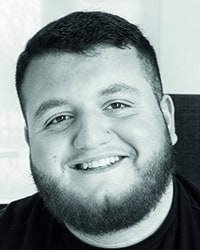
Karam Al-Akhras
Student supervisor at Learning Labs
He had studied a few other courses at various higher education institutions before starting on the systems science programme here in Örebro.
But never before had he encountered an educational method like walkshops.
“This can really ignite interest in a way that can be difficult to do through ordinary lectures.”
What is the biggest advantage of programming by hand instead of on a computer?
“That you actually get to learn the syntax,” says Al-Akhras. “What it should look like and how it should be written. You also learn to discover errors that the computer finds yourself. This course also provides a good basis for the next course, when you get to create a program from scratch. That’s when you realise how much you have learned.”
The group that he is helping through today’s task consists of the students Max, Nora, Lina, Liv and Samuel.
They are all new to programming and appreciate this more active teaching method.
“When you write everything out by hand, you really have to memorise how to do it,” says Max. “When you use the programming programs, they tell you a little about how to proceed and the computer tells you if you have made a mistake. Here you have to think for yourself completely.”
Lina agrees.
“Here you also discuss each step with each other, why you write what you write.”
Everyone in the group thinks that discussion and collaboration are the biggest advantages of walkshops.
“When you code, you usually sit by yourself and perhaps don’t understand why something went wrong. Here we can solve it together,” says Samuel. “You don’t get stuck in the same way as you do when you work alone,” Lina continues.
In addition to programming, you will also learn to cooperate with each other. Does that feel like relevant competence for the future?
“Yes, very much so,” says Liv. “We can always learn from each other, because we have all learnt different amounts. I think that can help if you are going to work on projects in the future.”
During the course, there is approximately one walkshop a week, often on Fridays to summarise what has been studied during the week.
Other teaching time also reflects an approach which puts the students in focus.
Instead of traditional lectures, the students are divided into groups of three and, like during a walkshop, they are given an assignment with questions to be answered.
To help them, they have the course book and – for the past year – Chat GPT.
“It is a tool that will be used more and more in programming, so we think it is good that students get to learn how it works,” says Johan Petersson.
The AI tool can also be a relief for some students. In many tasks, students are asked to explain specific concepts to each other.
“Some students may not have come quite as far as others and may have difficulty grasping programming. It can feel challenging to have to tell the others in the group that you do not know do something. But they can ask Chat GPT for an explanation instead, and then they can discuss the answer with each other.”
This type of teaching often takes place in normal lecture rooms, but the way the room is used is adapted to the needs of the teaching. In a room with staggered gallery seating, the student groups sit in clusters of three on every second row of seats.
Every other row is left empty so that teachers can move freely among the groups, see their work and be able to help without disturbing other students.
“We also have a concept that we call ‘lecture on demand’. Then the students can use a digital tool to give us input about what they want a lecture about. It is often the same subjects that are requested every year, so the content does not change very much, but it gives the students a chance to influence their own education,” says Petersson.
The room where today’s walkshop is taking place was specially designed for this very purpose, with many large whiteboards, adapted acoustics and the fold-out whiteboard walls.
It is part of a project called Learning Labs, which is a collaboration between Örebro University and Akademiska hus to develop interaction between teaching, learning and physical space.
“Johan and his colleagues were basically the first people at the university to start working with these issues,” says Anna-Eva Olsson, who is team leader in the work with Learning Labs. “When we then started working with Learning Labs, we put them together to form our first workshop group. So they have influenced the project significantly with their thoughts and methods.”
As well as the room in which today’s walkshop is being held, several smart classrooms have also been built on the campus, including a larger auditorium that has recently been redesigned and has become very popular with teachers, students and local companies looking for conference space.
Narrow rows of chairs have been converted into airy columns, where the majority of tables with seating for four people have been placed. Each table has a television screen hidden in the architecture, which can be raised up and down from the lecturer’s position.
The adaptations make it easy to conduct group work in the room, where each group has access to its own screen.
If required, it can also be used as a more traditional auditorium, with fold-out benches and movable tables and chairs.
“The university needs to offer solutions that will attract students to study here. Smart study environments are an extremely important part of that,” says Anna-Eva Olsson.
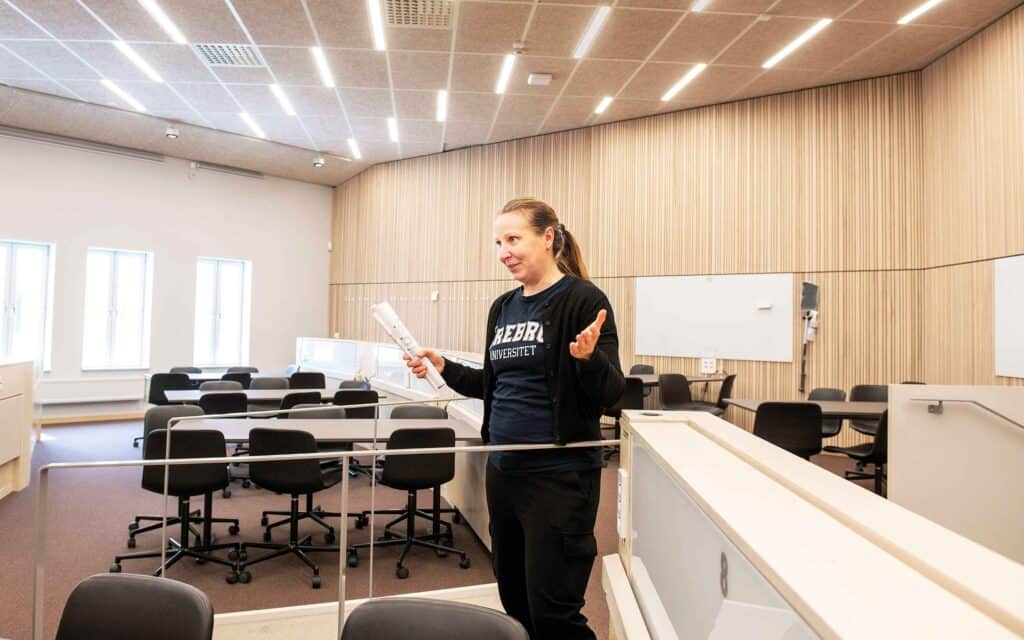
So far, it has mainly been the programming course on the systems science programme that has used the walkshop methodology.
But it is starting to spread slowly, both within Örebro University and at other universities, not least since the model was awarded the Swedish Information Systems Academy’s teaching prize last year.
“I have been in contact with two other universities, and there are some teachers here in Örebro who have started to explore the scope for doing something similar. It will be exciting to see where it goes in the future,” says Johan Petersson.
Teacher Andreas Ask believes that the method could also be used in other subjects, not just for programming.
“I think it is easier to implement for more practical elements, such as programming or perhaps in health sciences. But you could probably adapt it to more theoretical topics as well, where you discuss theoretical concepts. I think it has potential,” he says.
When the clock strikes 12, the walkshop comes to an end. Johan Petersson exchanges a few final words regarding today’s task – which he himself describes as one of the most challenging on the course – with one of the student groups before it is time to tidy up the room.
Together with teacher Andreas Ask and student supervisor Karam Al-Akhras, he begins to roll away the flexible whiteboard walls and collect the booklets with the task descriptions.
“Actually, the students are supposed to help tidy up here, but we are probably a bit too nice and often do it for them,” says Petersson, and Ask agrees with a laugh.
What is the most rewarding aspect of this type of teaching?
“That it is peer learning,” says Petersson. “The students learn together with others and from each other. That is the key to it.”
“The students learn together with others and from each other. That is the key to it.”
What would you say to other teachers who want to shift to a more student-focused form of teaching?
“You do not need to have purpose-built, smart premises to get started. Ten years ago, when we started the project, we used ordinary lecture rooms with simple solutions like flipcharts. The important thing is to get started and to then develop constantly.
Walkshop model awarded a teaching prize
The walkshop model was awarded the Swedish Information Systems Academy’s teaching prize in 2023. The prize was established in 2012 and is awarded every two years to an exemplary innovation in education at first, second or third cycle level.
An exemplary innovation means that there is a clear learning dimension and that it makes a difference for the students. The award aims to highlight innovation in education in order to raise the status of both the innovations themselves and the subject area as a whole. It can be given to one or more people.
